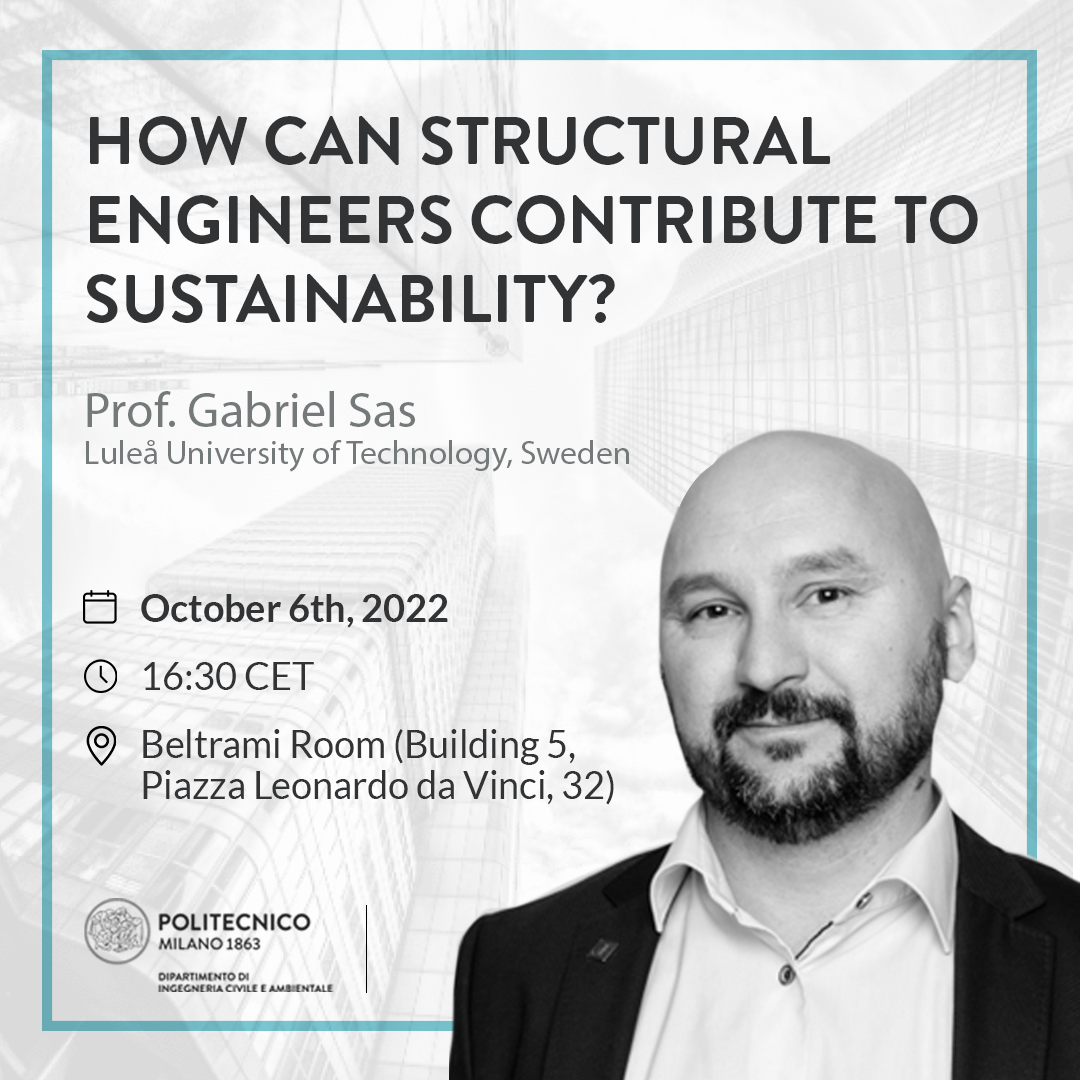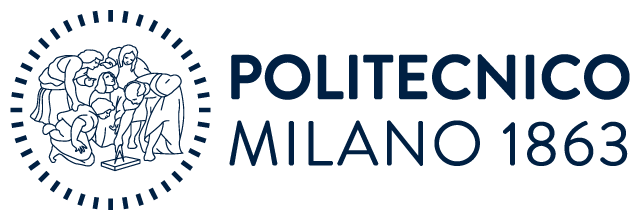
- This event has passed.
How can structural engineers contribute to sustainability?
6 October 2022 @ 16:30

On Thursday 6th October, a seminar entitled “How can structural engineers contribute to sustainability?” held by Prof. Gabriel Sas, Chaired Professor of Structural Engineering in the division of Structural and Fire Engineering at Luleå University of Technology, Sweden, will take place in Beltrami Room (Building 5).
Abstract:
Today the world builds at an unprecedented pace. Construction industry is responsible for about 40 per cent of the world’s carbon footprint. For a sustainable development we need to keep the 1.5-degree target, and we must reduce this number drastically by 2030. The challenge is how we find the balance between the safety of the structures and the financial and environmental costs of building and maintaining them. We need new methods to predict the life span of existing structures, solutions to extend their life and how can we quantify the impact of different decisions on the life length of a structure. Gabriel Sas, Professor of Structural Engineering at Luleå University of Technology, will discuss how structural engineers can contribute to promoting sustainability through sustainable-conscious structural assessment.
Speaker’s Biosketch:
Gabriel Sas, born 1981, is Chaired Professor of Structural Engineering in the division of Structural and Fire Engineering at Luleå University of Technology, Sweden. He obtained his PhD at the same university in 2011 and became Docent in 2017.
Before taking his current position in 2020, Gabriel’s work focused on large structures such as concrete bridges and dams with the aim to increasing their life length. Gabriel has been involved during his career in four full scale tests of bridges and he has developed methods for monitoring bridges and concrete dams using digital image correlation and methods to strengthen bridges using FRPs.
His research is primarily concerned with promoting sustainability by prolonging the life of existing bridges. When solving complex problems such as determining the capacity of an existing bridge, he favors multidisciplinary approaches in which the strengths of one method compensate for the weaknesses of another. This requires the seamless and resource-effective intertwining of diverse methods including numerical analysis, monitoring, condition assessment, structural testing, and reliability analysis such that one always applies the right tool or method at the right step.
His other research interests include the behavior of novel materials and structures made from next generation engineered materials such as UHPC, structures made from materials recycled from demolitions, and the structural safety of structures exposed to elevated temperatures.
